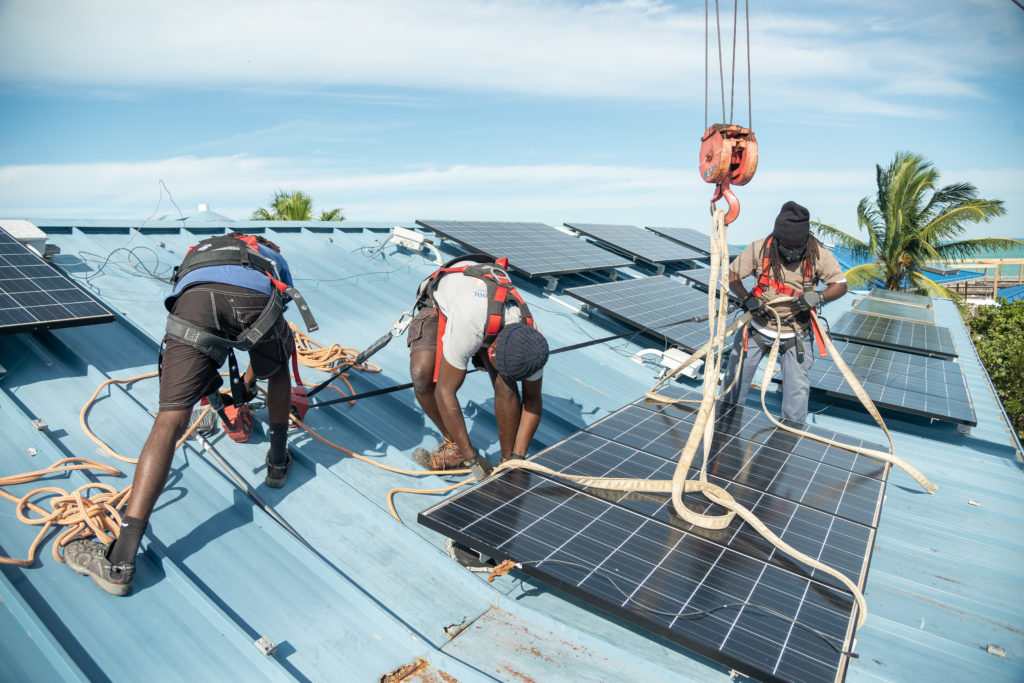Renewable Energy
Energized by Renewable Energy Initiatives
Most electricity in The Bahamas is generated via large diesel generators. Given the rising price of fossil fuels, antiquated design and failing infrastructure, the price of electricity in The Bahamas is now one of the most expensive in the world.
Photo-voltaic & Wind Turbine
The campus currently has a 71.2 kilowatt production capacity, with approximately 85% of the production from photo-voltaic panels. Working in partnership with the Bahamas Electricity Corporation (BEC), we installed the first grid-tie system in all of The Bahamas. We look to build upon our success, increasing our renewable energy production to the level of net-zero importation.
Real-time Monitoring and the Negawatt
The most inexpensive and efficient kilowatt-hour is the one you never used. Yet because electricity consumption is ubiquitous, and the amount of energy used abstract, conservation has always been difficult. As part of our educational effort, Campis (Campus Information System) was created. Our system is capable of monitoring electricity consumption and production on campus, energy import and export to the utility. We look to expand the system by creating a greater granularity to our measurements, as well as including the measurement of environmental data.
Biodiesel
We operate a community scale biodiesel facility that provides over 10,000 gallons a year of ASTM D-6751 quality biodiesel to our organization, meeting our fuel needs for our vehicle fleet, construction equipment and stationary generators. In accordance with our dedication to developing zero-waste systems, biodiesel takes used cooking oil, an unwanted waste output, and transforms it into a usable motor fuel source. Modelling energy independence, we look to expand our current facility, allowing us to increase production using the fuel for our marine fleet of vehicles as well.
Anaerobic Digestion
The two-stage anaerobic digester improves upon the conventional method of handling sanitary waste in The Bahamas, which is either spreading in a field, or engineered solutions that involved chemicals and deep well injection. Anaerobic digestion offers the opportunity to produce energy from a waste stream, cleaning the waste stream and providing nutrients for use in agricultural activities. CSD looks to the anaerobic digester as another input to the Waste-to-Energy plant that will share energy across multiple processes and pieces of equipment. Prospective research is in the areas of increased efficiency in biogas production, and effective means of utilizing this energy source either for cooking, heat, or electricity production.
Wastewater effluent from The Island School’s sanitary waste systems has traditionally been treated using passive bacterial treatment in wastewater gardens. During the winter of-2017, a modified trickling filter was installed, as the first effort at an engineered system to confidently treat sanitary waste.
Waste-to-Energy
A hallmark project for our Sustainable Systems is the design of a Waste-to-Energy Plant that will share energy in the form of heat, liquid, or solid fuel across processes involving each of our sustainable initiatives. The plant will act as a central energy consolidation hub that will transform waste heat, municipal solid waste, or local, invasive hardwood into electrical energy or process heat for biodiesel. The overarching concept for the Waste-to-Energy plant is to showcase all of the Island School’s sustainable initiatives in one location, and meet the goal of zero waste. One process’s waste is another process’s energy source.
